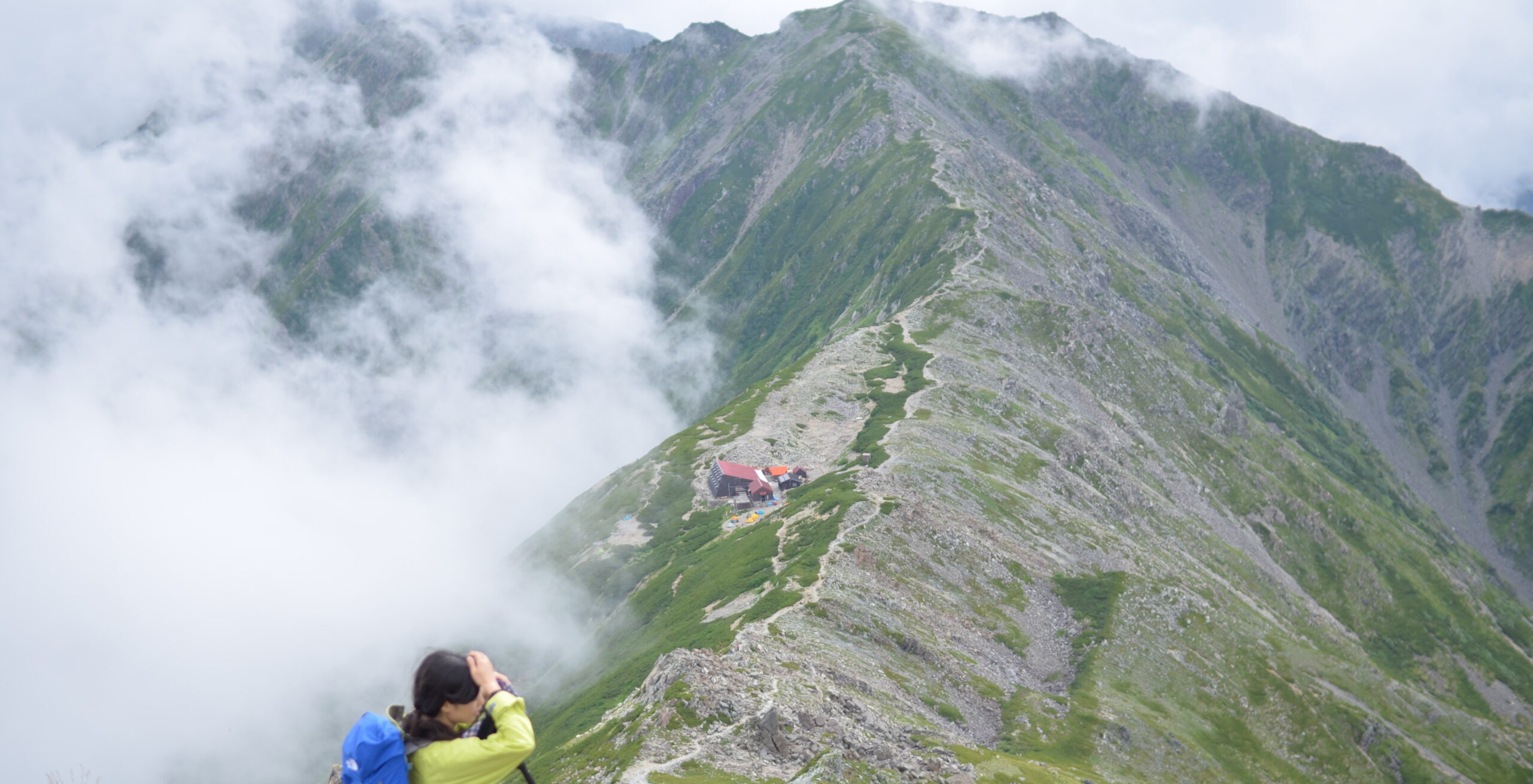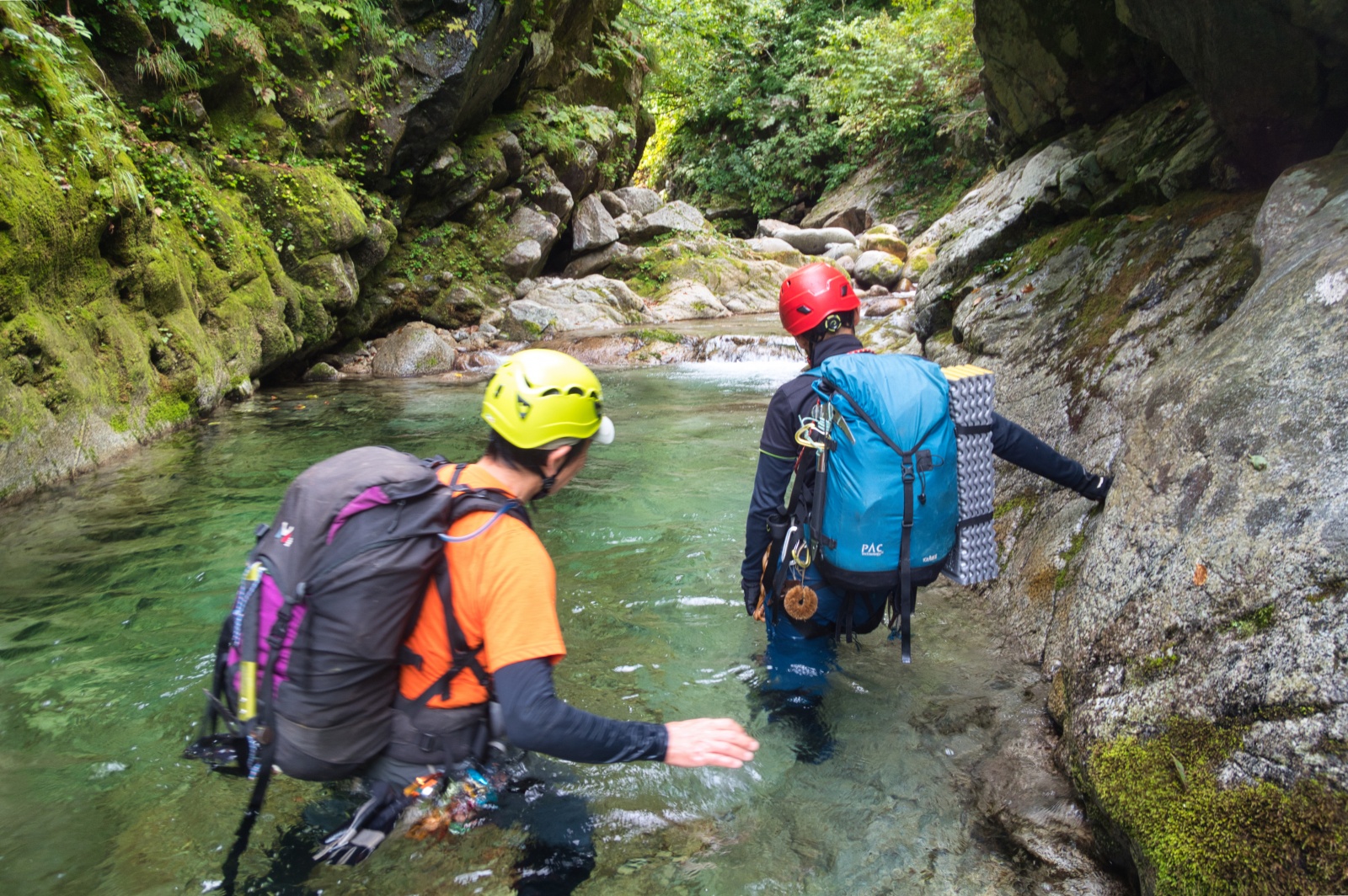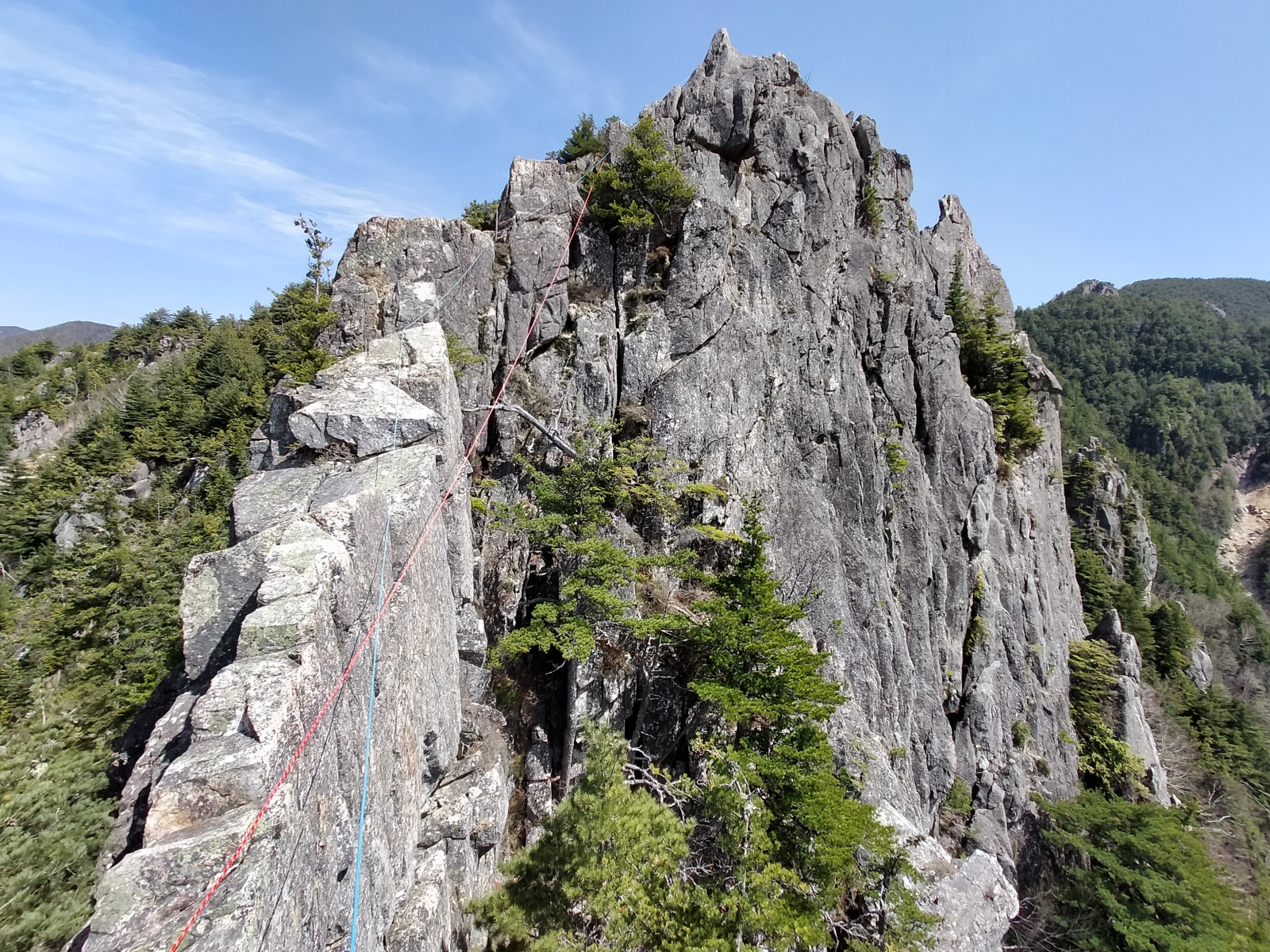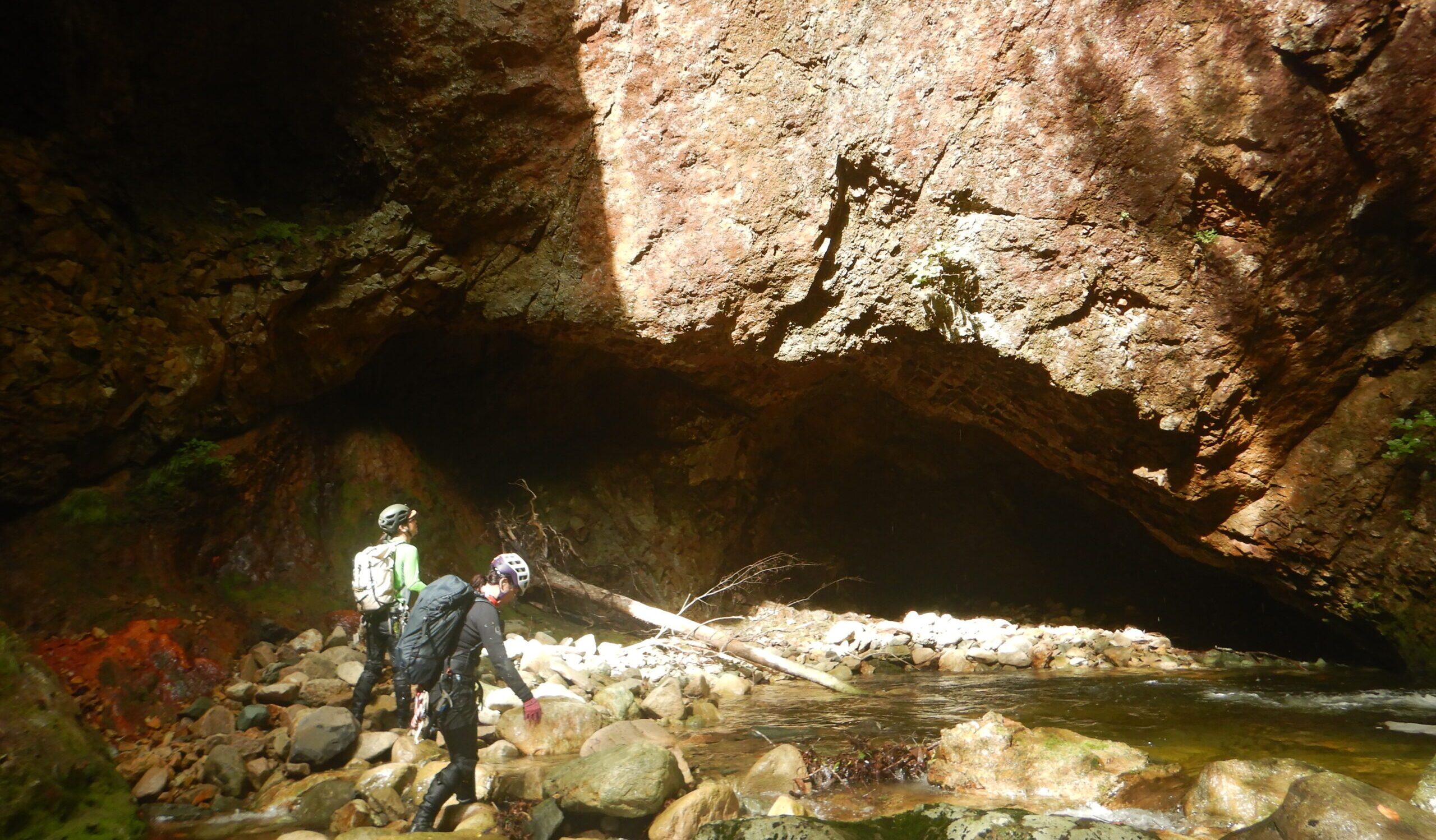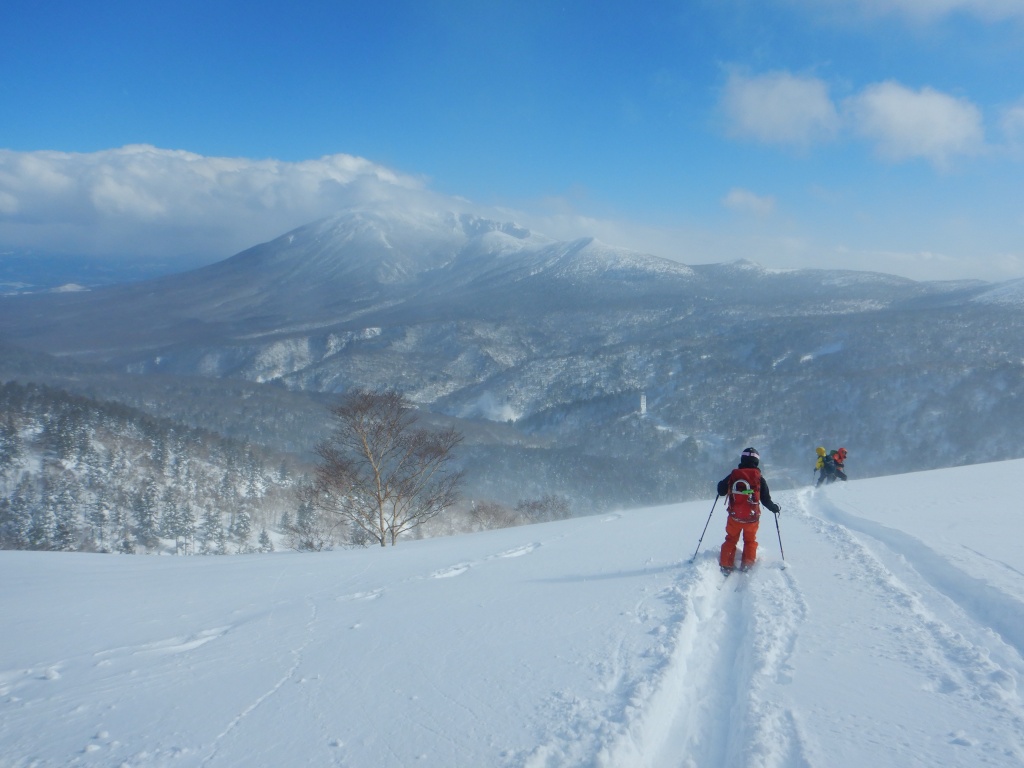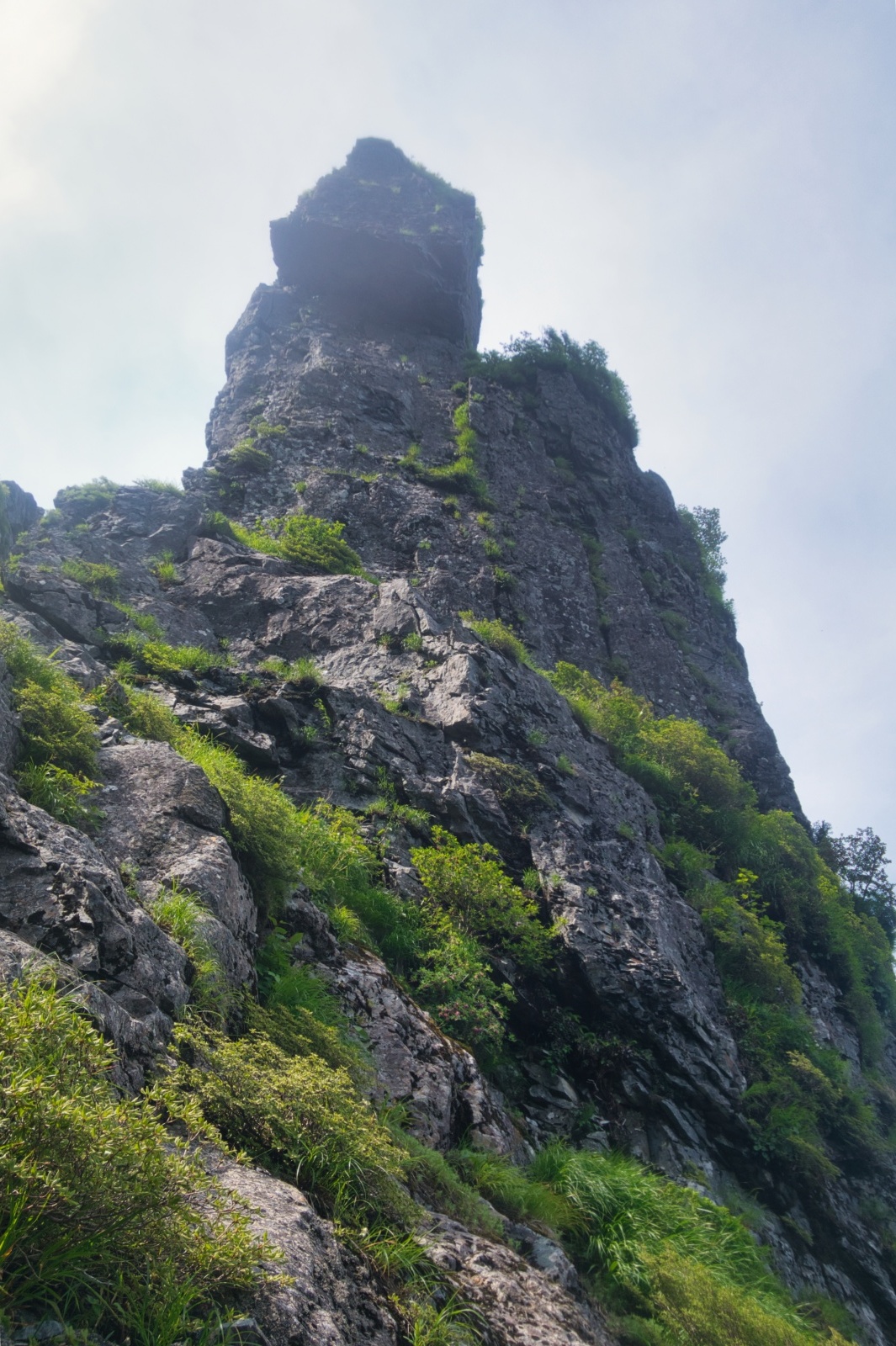【Deep Dive Chronicle】Sukkan-zawa & Sakura-zawa: Ascending the Azure Stream in September
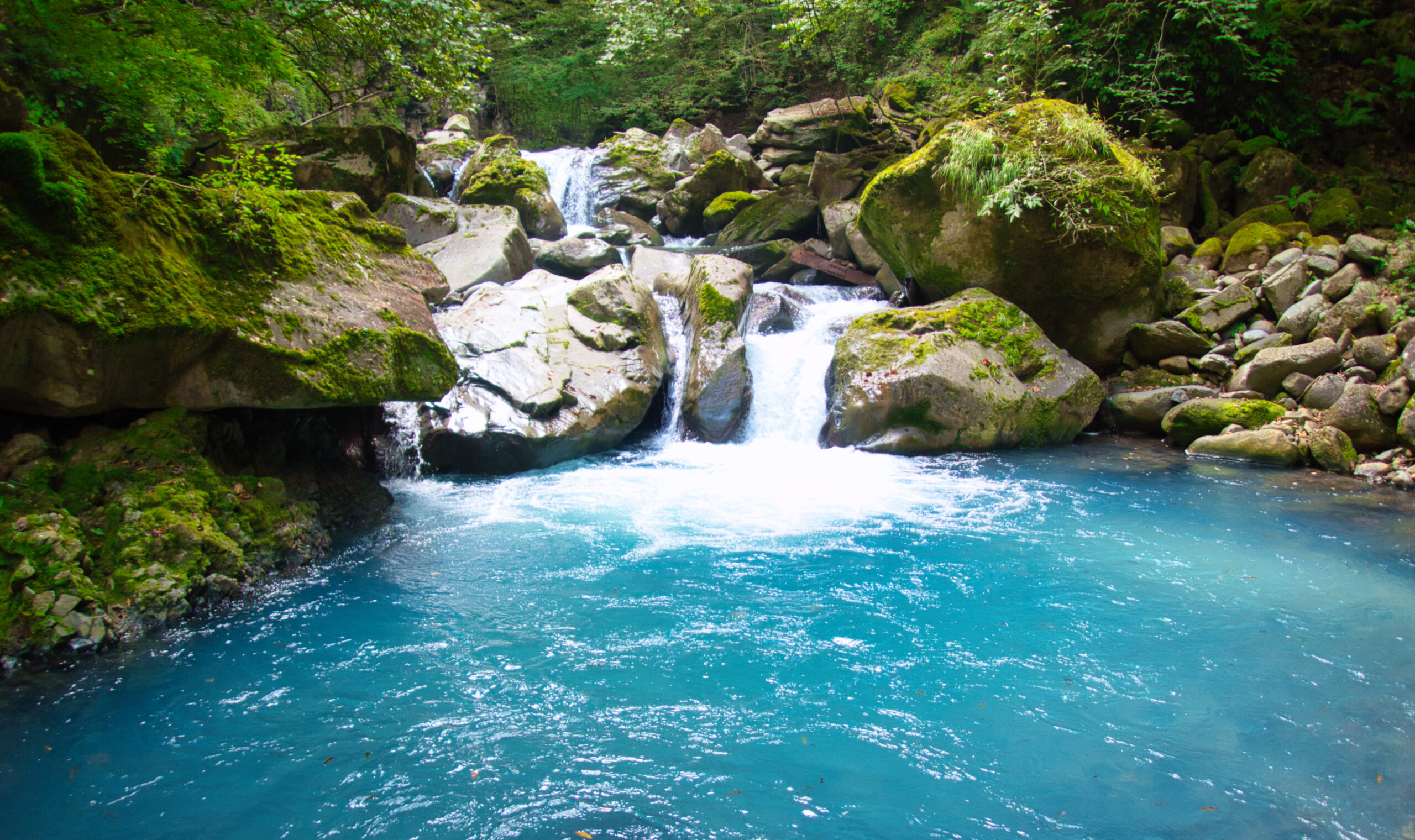
Late September in the Nasu region. Three of us ventured into Sukkan-zawa and Sakura-zawa, captivated by the azure waters known as “Sukkan Blue” and the columnar basalt gorge beauty. This day trip through the streams was adorned with waterfalls bearing elegant names—Yuhi, Nisaburo, and Soren. A chronicle of early autumn stream climbing, told from the perspective of both a mountaineer and a stream climber.
目次
Part 1: Toward the Azure Stream
The last Sunday of September. S, M, and I departed from Tohoku before dawn. Our plan was to ascend Sukkan-zawa—its name said to derive from the onomatopoeia “sukkan”—and traverse to Sakura-zawa in the Nasu region.
We began walking the forest road from Yama-no-eki Takahara shortly after 8 AM. The sky was cloudy with occasional breaks of sunshine, stirring equal parts anticipation and uncertainty. Would we be able to see the distinctive azure known as “Sukkan Blue”?
After passing Raitei Falls, as the roar of Hoko-hekireki Falls—a name evoking thunder and lightning—drew near, the character of the gorge transformed dramatically. Before us spread rock walls forming a geometric beauty of columnar jointing, with azure water threading through the gaps and cascading down.
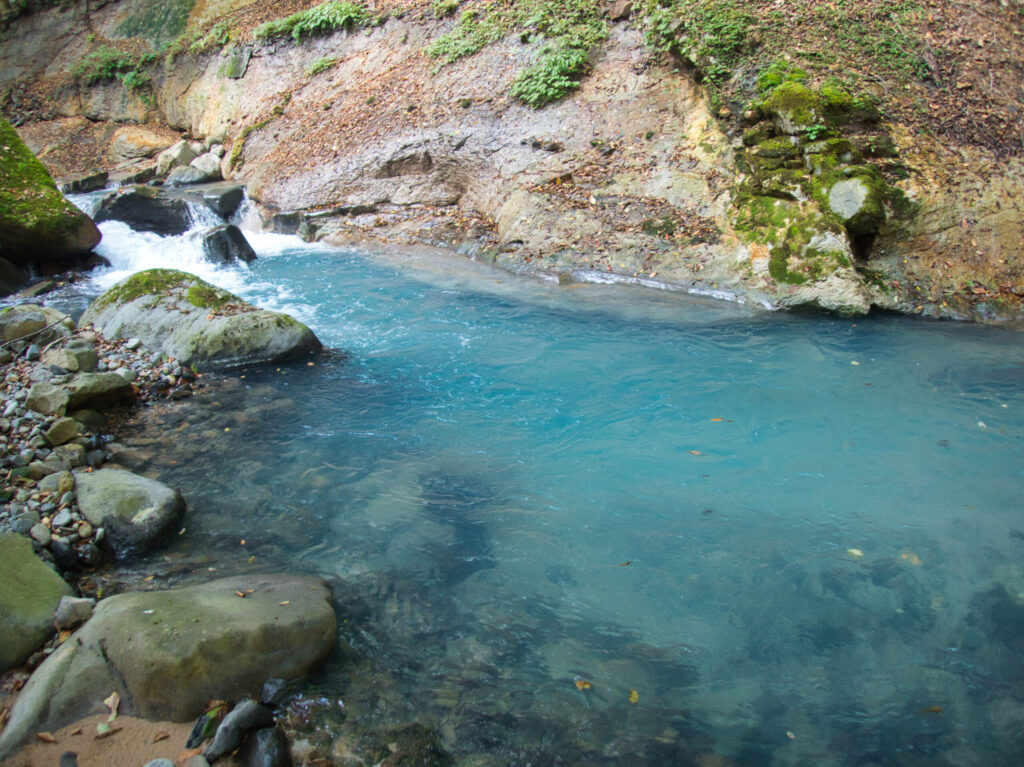
We crossed Sukkan Bridge and entered the stream. The water was surprisingly cold, and our felt-soled shoes carefully gripped the wet rocks. But more than concern for our footing, we were captivated by the color of this water. It recalled the azure I had seen in Shitomae-zawa. A silky blue—smooth as silk—that stood out brilliantly against the dark rock faces of the columnar basalt.
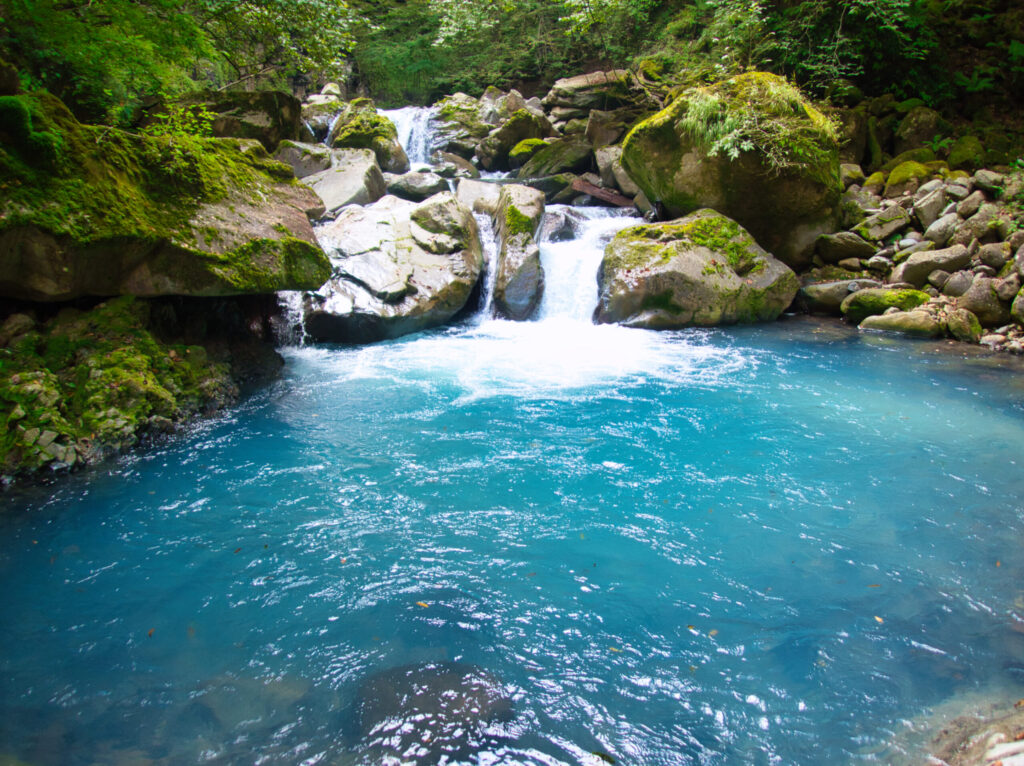
Part 2: Waterfalls, Names, and Water
As we approached Yuhi Falls, the stream character changed further. From the right bank’s rock wall, numerous thin waterfalls fell like curtains.
“Let’s put on rain gear.”
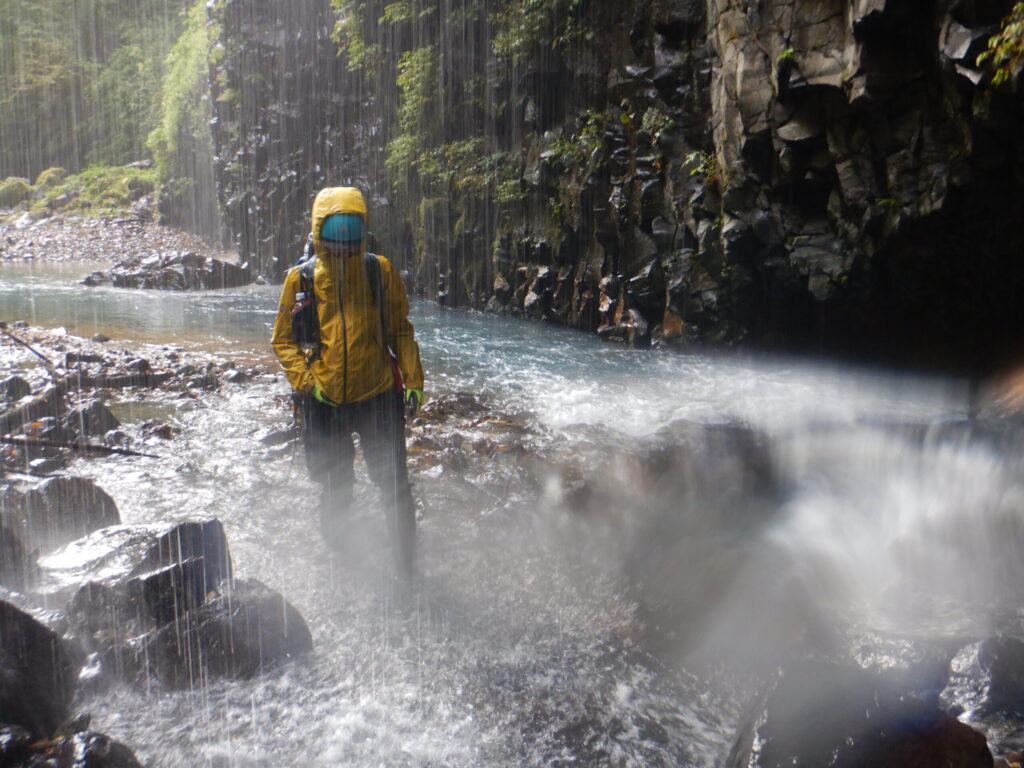
Nodding at S’s suggestion, the three of us donned our rain suits. We proceeded while being drenched by water falling from above. It was a strange sensation—walking through rain on a clear day. Cold water trickled down our necks and soaked our backs.
Yuhi Falls appeared. Perhaps ten meters high. Peering into the pool, it held deep azure water. The basin looked considerably deep. At this water temperature, swimming was best avoided. The three of us exchanged glances and decided to bypass it. The rock appeared solid with abundant holds. Climbing looked straightforward, but the pool’s depth gave us pause. We burned into memory the waterfall’s sculptural beauty and the geometric elegance of the surrounding columnar jointing, then followed the trail to emerge above the falls.
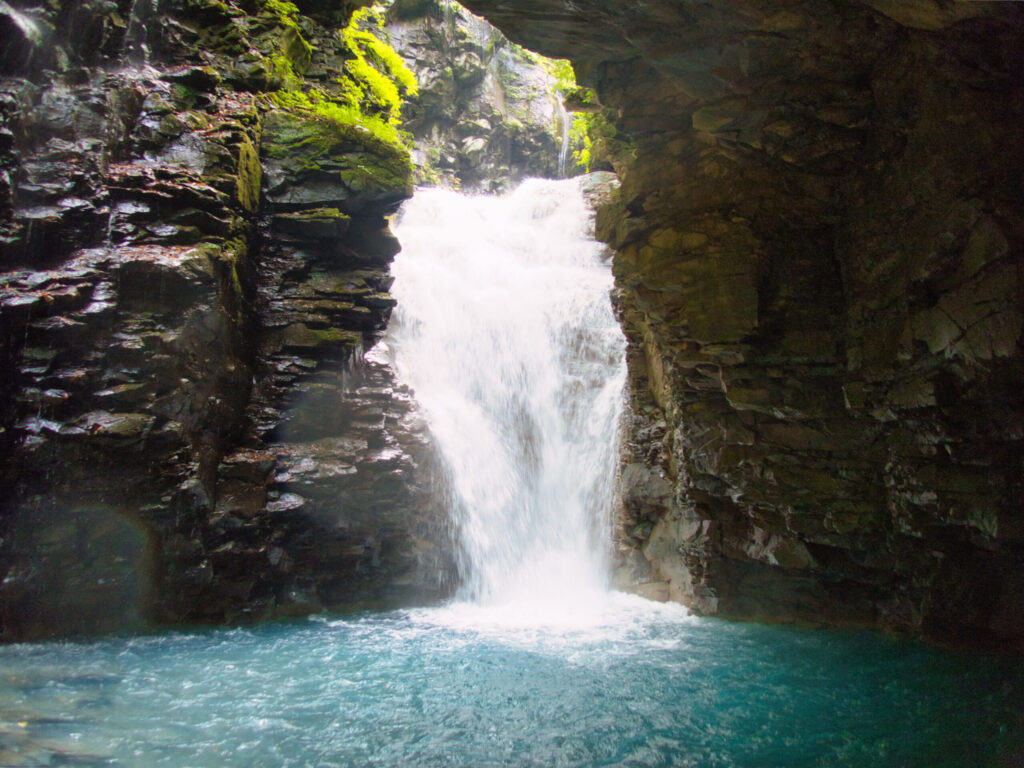
We searched for Soren Falls but couldn’t find it. M checked the map, and we realized we had gone slightly past it. Doubling back, we spotted a waterfall like white threads hanging in the depths of a tributary. Soren—an elegant name meaning “silk curtain.” True to its name, it was a delicate and graceful waterfall.
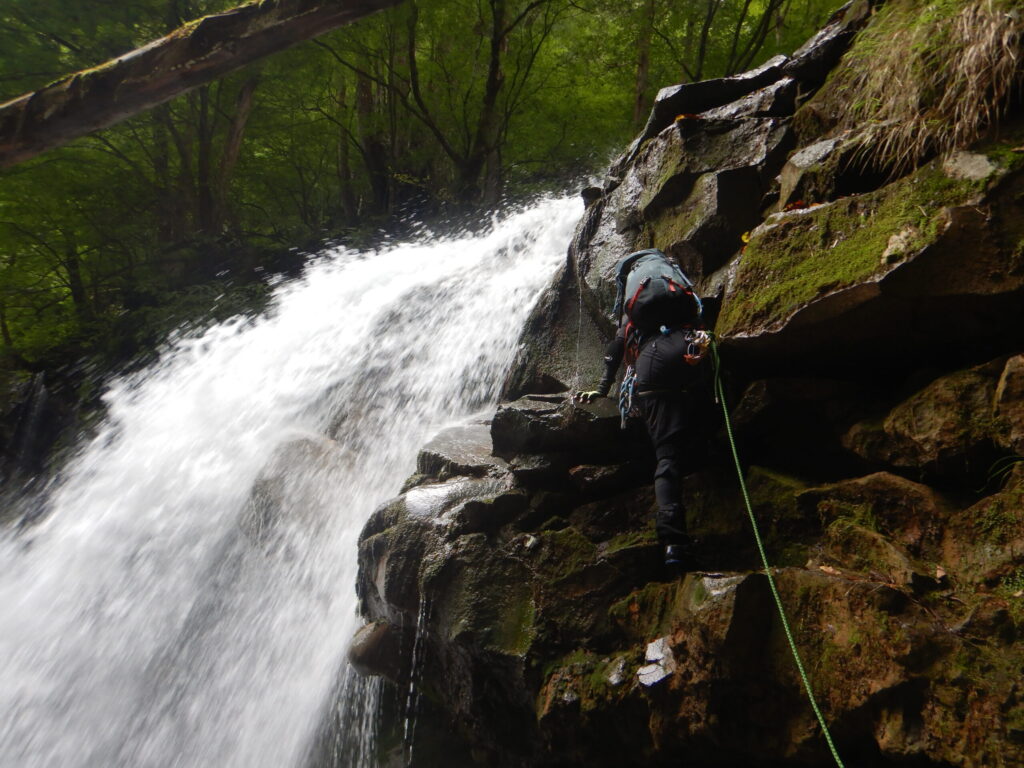
By the time we passed Nisaburo Falls, it was nearly noon. Yuhi, Nisaburo, Soren—all unique names, as if christened affectionately by an enthusiast. What thoughts moved the first person to ascend this gorge when naming these falls?
Part 3: The Cherry Stream and the Azure Fall
After climbing out of Sukkan-zawa, we entered Sakura-zawa. The change in color was striking. The Sukkan Blue vanished, and Sakura-zawa’s water ran crystal clear. Though in the same Nasu mountain region, the contrast was vivid.
The streambed continued with beautiful slabs. Thin water flowed over smooth bedrock, and we walked across it. In spring, might cherry blossom petals drift down this water’s surface? Imagining this, the name Sakura-zawa resonated with even greater beauty. Perhaps the most beautiful name of any stream I’ve ascended.
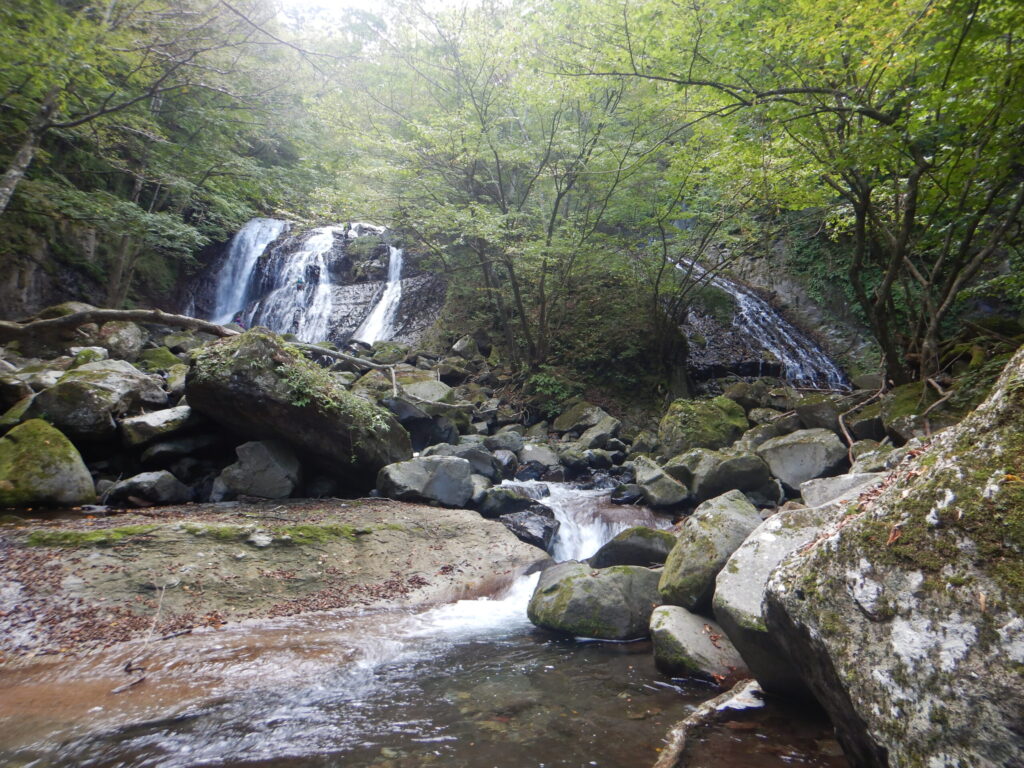
Both Hoko-hekireki Falls and Raitei Falls proved climbable. There were no sections that could be called crux moves, and the gorge was accessible even for beginners. Yet this didn’t mean monotony. The succession of waterfalls and varied stream character kept us engaged without pause.
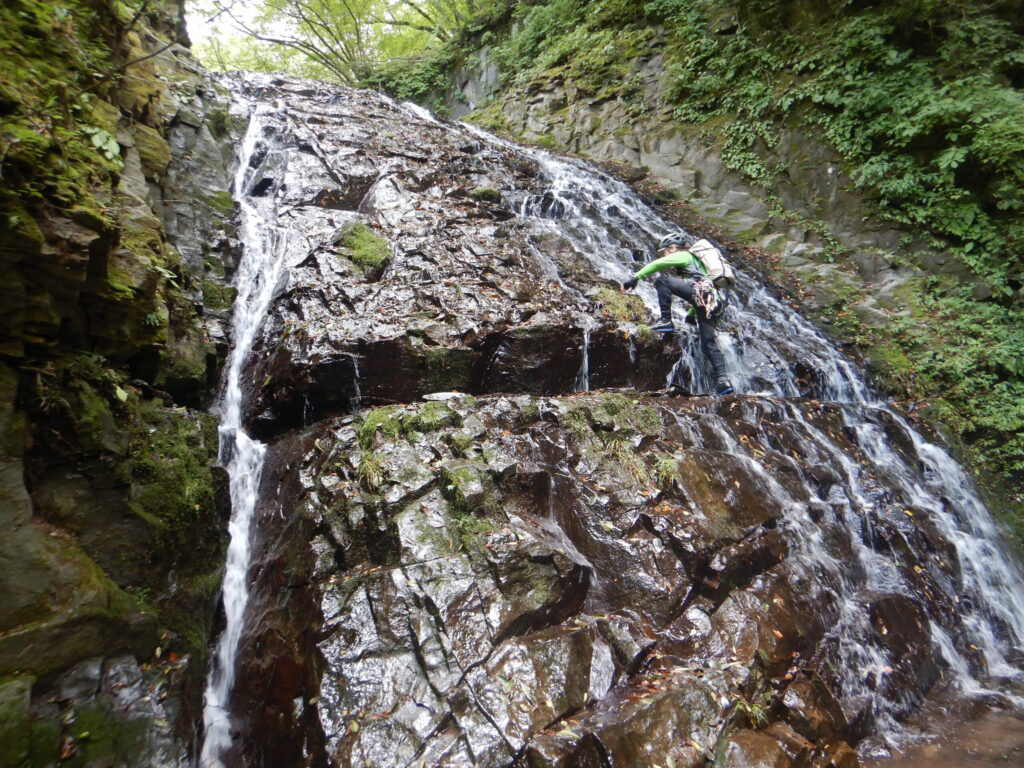
And finally, Oshiraji Falls awaited us.
I caught my breath at the color of the pool. What blue could this be called? Different from Sukkan Blue—a deep, clear azure. The water should be transparent, yet only the pool held this color. Was it the play of light? The water depth? I couldn’t say. I simply burned this beauty into my memory.
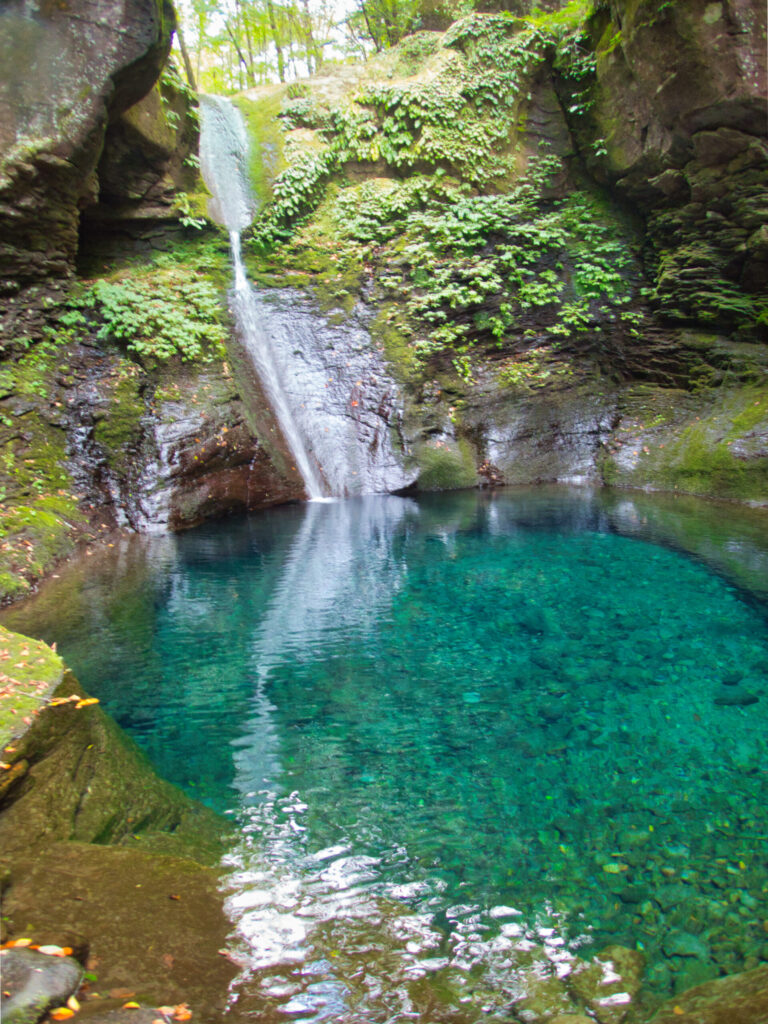
We emerged at Gakko-daira after 2 PM. The cloudy sky had finally begun to clear.
The gorge beauty of Nasu’s characteristic columnar basalt, and water that shifted from Sukkan Blue to crystal clear and back to azure again. Waterfalls bearing elegant names—Yuhi, Nisaburo, Soren, Hoko-hekireki, Raitei. A day trip through the streams that thoroughly satisfied us in early autumn.
Log Summary
Date: September 28, 2025 (Sunday) – Day trip
Team: 3 members
Mountain Region: Nasu – Sukkan-zawa to Sakura-zawa
Route: Yama-no-eki Takahara → Raitei Falls → Hoko-hekireki Falls → Sukkan Bridge (stream entry) → Yuhi Falls → Soren Falls → Nisaburo Falls → Sakura-zawa → Oshiraji Falls → Gakko-daira → Yama-no-eki Takahara
Activity Time: Approximately 6 hours (including breaks)
Accommodation: Day trip
Weather: Cloudy with occasional sunshine
Water Level: Moderate
